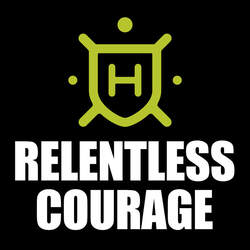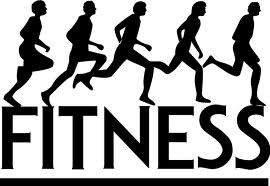Program Design Basics: PeriodizationGoing all out all the time might sound like a good idea. About all it does is sound like a good idea. Today I'm going to talk about picking a starting point for exercise and also navigating your way through an exercise program using a periodized approach.
With over 15 years coaching and training and more than a dozen ultra marathon finishes under my belt, I have done it the wrong way and also know what it looks like to do it the right way. It's taken some time and many mistakes, but I have learned what a healthy program looks like and I'm excited to share some of what I know with you today. Selecting your starting point If you are thinking about starting an exercise program do yourself a favor and start by creating a habit to exercise. Instead of beating yourself up for three days because your motivated only to come away with an injury or a massive dislike for anything movement related, start slow. You'll be glad you did. I'm working on a project right now to go along with the AdvoCare 24 Day Challenge. I'll likely sell it on the side as well. Look for it in a month or two. There will be three 24 day programs to choose from. Base Builder (beginner), Fitness Builder (intermediate) and Advanced Training (advanced). That's what your build up should look like too. One of the things I tell people is to be honest with themselves. Most people think that they are at a higher fitness level than they actually are. Just because you've been there before does not mean that you should start from where you left off, especially if it was three to six months ago or more. Our bodies adapt to how we train them. If we don't train them physically, they adapt to a sedentary lifestyle. Any increase in activity is an increase in the stress to all systems. I say it all the time, "it's about progress, not perfection." This applies when choosing a starting point to exercise just like it does on choosing the food you put in your mouth. If you are looking to create lifelong habits of regular exercise, I recommend taking the time to truly identify your starting point. Spend the extra energy starting slowly and building up a good base. Start at the shoulders, hips and spine and work your way out. Your biceps and triceps will benefit from a strong foundation. By focusing on stability and balance early on in your program, you'll be much more functionally strong as well. A periodized program example When I started running ultras, I just went out an ran. That led to always feeling wiped out and injury on more than one occasion. This past summer I did four ultras, felt great all summer and came away unscathed. How? I'm going to tell my story now and share with you some of what I've learned on the inside of our fitness industry. First of all, I like the idea of training for something. It doesn't matter what it is, but if you choose something doable out there to achieve, where there is a real objective and a quantifiable success, it's my experience that you'll be more likely to achieve it. Like I said before, I used to just run. I would run in winter and in summer. I would run whenever I felt like I needed to move. I hurt myself and missed an event or two because of it. Now, instead of just running, I have a plan. I have learned that what AND how you train does affect the end result. My training used to consist of ten miles every day and longer on the weekends. Now, I bridge the long runs with five milers and throw in the occasional longer midweek run if I'm in a high volume period. I know that many of you reading this might not be able to relate to ultra distance running. Let me speak a language many of your would understand, going to the gym to workout. I'll start by saying that no matter what you do for exercise, if you don't eat good food that helps your body to recover, it won't and you'll likely end up falling short of your goals. It doesn't matter what your goals are, what you eat DOES matter and is often times the difference between failure and success. What you eat can be periodized too and I'll save that for another day. Like I talked about last week, threshold and recovery matter and finding a balance between pushing yourself physically and knowing when to back off and recover is a tough one to establish. It's unique to each individual and changes based on their current fitness level and accumulated work load. Not only should you incorporate rest and recovery into your workouts, you should also incorporate rest and recovery into your program design. If you're training for a big event, push hard and dial it in on your specific training prior to the event. Once that event is over, it might be a good idea to shift your focus into rest and eating for recovery. This will not only give your body a much needed break, but it will allow your mind to refocus and prevent burnout as well. It's time to finish this post now. Be honest with yourself when you are starting a new exercise program. Instead of starting where you left off six months to a year ago, take the extra time and energy to build your body up. Also, understand that incorporating rest and recovery, not only into your workouts, but into your program as well, can have a huge impact on your success over time. Jon Howard - Husband and Father of 3 | Ultra Endurance Athlete | Owner - Training Edge Sports
0 Comments
Leave a Reply. |
Archives
April 2024
|


 RSS Feed
RSS Feed